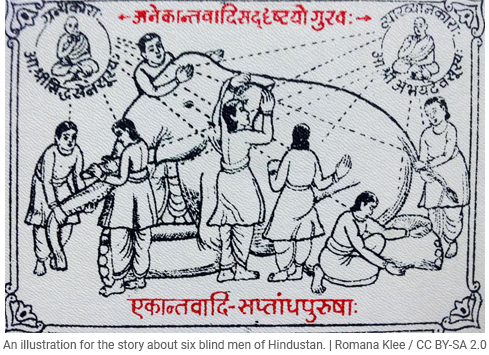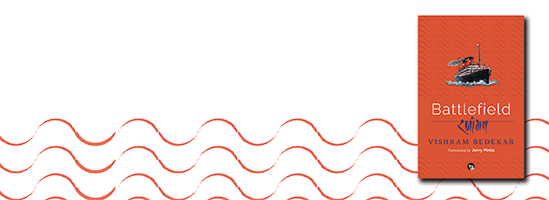November 29, 2019
Simran Agarwal, Sahapedia
Children’s magazines
Raising good Indians: What early twentieth-century children’s journals in Hindi tried to teach
 The early 1900s saw the rise of Hindi children’s journals such as ‘Balak’, ‘Balsakha’ and ‘Kanya Manorajan’, which tried to instil nationalist morals.
The early 1900s saw the rise of Hindi children’s journals such as ‘Balak’, ‘Balsakha’ and ‘Kanya Manorajan’, which tried to instil nationalist morals.
Parallel to monumental publications such as Anandmath and Hind Swaraj that emerged during the Indian freedom movement, there developed another kind of literature – children’s journals. These journals were started as a new enterprise in publishing – with the printing press coming into prominence – to carve out a national identity for children, future citizens of the nascent nation. That there was power in children’s literature was evident in how Iqbal’s song for children, “Saare Jahaan Se Achha” became a popular nationalist song against the British rule.
In the early 1900s, Hindi was gaining acceptance as the vehicle for cultural self-assertion in the nationalist discourse – especially in north India. The concept of rashtra bhasa (national language) – a Hindi public sphere – was used to rally the masses. South Asian literatures scholar Francesca Orsini explains this as the common language for everyone – Bhartendu’s nij bhasa – “which is at one time of the individual and of the community…that should acquire the seal of recognition by becoming the language of the state (rajbhasa) and of the nation (rastrabhasa)…”
Thus, the nationalist project of the 1920s and 1930s used Hindi children’s periodicals to expand the locus of “home” from the immediate location of birth to the national space, allowing Hindi pedagogues to mediate their nationalism for children.
It was in this milieu that Hindi children’s journals, such as Balak, Balsakha, Kanya Manorajan, Vidyarthi, Kumari Darpan, Shishu, and Khilauna, gained prominence as national journals – instilling nationalist morals and patriotism, opining on what constitutes an ideal future-citizen for India.
Modern India historian Gyan Prakash points to the assumption prevalent among many Hindu nationalists of the time that the “infant nation” needed to be endowed with literature, history, culture and science. This was clearly reflected in the content of these children’s journals, which ranged across: (i) prayers; (ii) rhymes, lullabies and poetry; (iii) short stories, fairy tales and serialised novels; (iv) moral essays, biographies and scientific articles on geography, botany, biology, astrology, music and domestic science; (v) riddles; and (vi) editorial. A look at the tenor of content sheds light on how belongingness was inculcated.
Prof Shobna Nijhawan, in “Hindi Children’s Journals and the Nationalist Discourse (1910-1930)”, gives the example of Kumari Darpan (Mirror of the Maiden), first published in Allahabad in 1916. How a feeling of national belonging was camouflaged in “factual knowledge”. In the article “Brahmand aur Saur Jagat (The Cosmos and the Solar System)”, the writer talks about the wonders of the universe, with the additional line: “How often would you have wished to hear stories about all these things?…This is why I will tell you this story in your own language.”
In the second part of the article, “Bhugol ki Kahani (The Story of Geography)”, the child is taught about her origins:
“Where is the country in which we people live? In which part of the world is it located?… Our country, Hindustan, which is also called Hind, Bharatkhand or Bharatvarsh or simply Bharat, is located in South Asia. Asia is the home of many people who populate the land from Asia to Europe. These people are of Aryan origin. Before learning more about the Asian people, we should take a closer look at our country.”
Linking the Aryans of the Indian subcontinent to Europe, she says, “The inhabitants of Europe are for the most part the offspring of the Aryans who travelled West.” Conspicuous in her narrative is use of race, ethnicity and territoriality as the central denominators of the nation. She also informs her readers of the achievements of the Indus Valley Civilisation to impress upon them the idea that because India was an ancient civilisation, Indian Aryans belonged to the “leading race” of the world.
Nationalism, thus, functioned as the glue that packed together the prayers, poems, stories and scientific essays of such journals.
So popular were these journals that, according to scholar Nandini Chandra, the circulation of monthly magazines like Balak and Balsakha ranged between 3,500 and 5,000 – comparable to popular adult literary magazines Sarasvati and Madhuri, whose figures were 3,000 and 6,000, respectively, for the year 1924. In “The Pedagogic Imperative of Travel Writing in the Hindi World: Children’s Periodicals (1920–1950)”, she also adds that “for girls, many of whom did not attend formal schools like their brothers, these periodicals really did constitute alternate schooling”.
Interestingly, initially these journals hesitated from making direct attacks at the discriminatory policies of the colonial administration till the mid-1910s. This changed with the advent of Mahatma Gandhi in mainstream Indian political struggle. The following passage from Swarup Kumari Nehru’s 1917 article “Deshbhakti (Patriotism)” in Kumari Darpan, tellingly illustrates the changing face of the Hindi literary sphere:
“Patriotism is to be practised with the body, the mind, and one’s possessions…Whether the person is old, young, or a child, rich or poor, it is the dharma of every person to serve the country. Whosoever wants to practise true devotion should first make the effort to wear svadeshi clothes, eat svadeshi food and advise friends to do the same.”
Such exhortations continued to gain strength as the nationalist campaign gained further momentum in the 1920s. Khilauna (Game), a children’s journal first published in 1927, was markedly different in format from its predecessors. This published poem shows the militant nationalist tone adopted by children’s journals in the coming decades:
Ham vir hain, valvir hain, randhir hain, balvan
Mar janyage, kat janyage, ho janyage, balidan
Marenge ham, tyagenge ham, chorenge ham, dhanpran
Nij des hit, nij dharm hit, nij jati hit, abhimanWe are heroes, rebels, brave and powerful
We will be wounded, die in battle and be sacrificed
We will dedicate our lives, leave behind all wealth and abandon everything
For the welfare of our own country, our own belief, our own people and pride
The poem illustrates that the journals’ agenda was never to simply entertain children or educate their parents on child-rearing. They were also devices to influence the social imagination of the emerging middle class in a language that was imagined as the medium for creating a unitary linguistic consciousness. “Desh ki Baat (News of the Nation)” was a regular column that focused on anti-colonial discourse.
Eventually, the nationalist campaign led by Jawaharlal Nehru and a new generation of leaders, under the guidance of Gandhi, managed to overthrow the British yoke in 1947. However, the project of creating a common identity amongst people of a diversified land did not come to an end. The “Ideal Boy” charts of post-Independence India continued to offer fables featuring virtuous protagonists, encouraging children to become “ideal sons of the nation”. Only this time, the pedagogical exercise was not only the product of the national movement and Independence but of the Partition that followed.
While extensive research in the field is not available, studies in these didactic exercises help understand how young children encountered the nation and explored everyday nationalism. According to education and culture scholar Zsuzsa Millei, “exploring how children inhabit and learn the nation – as banal as singing and discussing the world or singing a song through which forms of sociality arise, emotions learned and attachments are formed – is a significant agenda.”
Such exercises aid our understanding of how collective identity and imagination of nationhood can emerge. Therefore, studying how nationalism works to establish the idea of a national community amongst children is important, especially amongst a diverse populace such that of India.
This article is part of Saha Sutra, on www.sahapedia.org, an open online resource on the arts, cultures and heritage of India.
The above article is taken from www.scroll.in and was published on November 17, 2019
